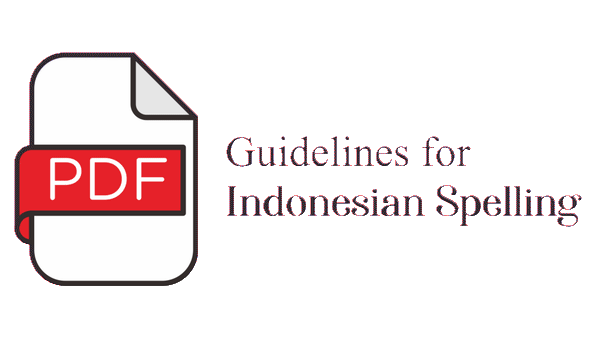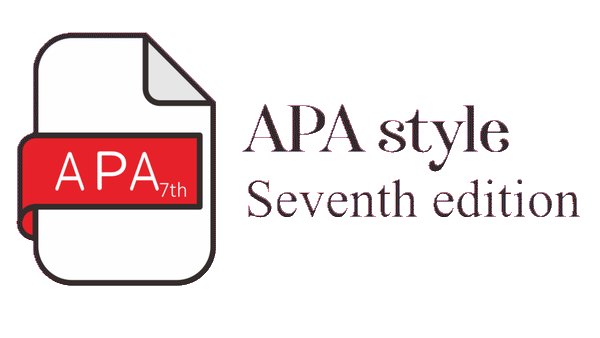SIKLUS PEMANFAATAN ENERGI SUMBER DAYA PESISIR OLEH AKTIVITAS MANUSIA BERBASIS LOOP AUTOKATALITIK DI KOTA MAKASSAR
Abstract
Kota Makassar merupakan sebuah sistem sosial ekologi yang kompleks dengan berbagai proses metabolisme energi di dalamnya. Penelitian ini bertujuan menggambarkan pola pemanfaatan energi secara sederhana dalam kerangka konsep metabolisme sosial di Kota Makassar. Pendekatan yang digunakan adalah Autocatalytic Feedback Loop. Hasil penelitian menunjukkan bahwa penggunaan lahan dan peningkatan konsumsi energi mengalami peningkatan seiring meningkatnya jumlah penduduk dan limbah. Di sisi lain, ketersediaan sumber daya lokal atau produksi perikanan, pertanian, dan peternakan mengalami ketidakstabilan produksi. Untuk menstabilkan sistem, sebagai suatu sistem yang selalu berusaha menstabilkan diri, Kota Makassar menstabilkan proses sistem dengan melakukan input sumber daya dari luar.
Title: The Useful Cycles of The Coastal Resources Energy By Human Activities Base on Autocatalytic Loop in Makasar City
Makassar City is a complex social ecological system with the various processes of energy metabolism in it. This study aims to describe simply the pattern of energy utilization within the framework of the concept of social metabolism in Makassar. The approach used is Autocatalytic Feedback Loop. The results showed that land use and energy consumption increased as population and waste increased.On the other hand, the availability of local resources or the production of fisheries, agriculture, and livestock have production instability. To stabilize the system, as a system that always try to stabilize itself, Makassar City stabilizes the system process by inputting external resources.
Keywords
Full Text:
PDFReferences
Alier, J.M., Giorgos, K., Sandra, V., Mariana, W. &vLeah, T. (2010). Social Metabolism, Ecological Distribution Conflicts, and Valuation Languages. Ecological Economics, Vol. 70(2), 153-158 doi:
http://dx.doi.org/10.1080/10455750902727378.
Agudelo-Vera C.M., Mels, A., Keesman, K., & Rijnaarts,
H. (2012). The Urban Harvest Approach as an Aid for Sustainable Urban Resource Planning. Journal of Industrial Ecology, Vol. 16 (6). doi: http://dx.doi.org/10.1111/j.1530-9290.2012.00561.
Anderson, P. & Elmqvist, T. (2012). Urban ecological and
social-ecological research in the City of Cape Town: insights emerging from an urban ecology. CityLab. Ecology and Society. Vol. 17(4): 23. doi:http://dx.doi.org/10.5751/ES-05076-170423.x
Andrésa M.D., Barragána, J.M., Sanabria, J.G. (2018).
Ecosystem services and urban development in coastal Social-Ecological Systems: The Bay of Cádiz case study. Ocean and Coastal Management. Vol: 154 (2018) 155–167. Doi: https://
doi.org/10.1016/j.ocecoaman.2018.01.011.
Bancheva, S. (2014). Integrating the concept of urban metabolism into planning of sustainable cities: Analysis of the Eco² Cities Initiative. DPU Working Paper No. 168. Retraivedhttps://www.ucl.ac.uk/bartlett/development/sites/
bartlett/files/migrated-files/WP168_0.pdf.
Broto V.C., Allen, A. & Rapoport, E. (2012). Interdisciplinary
Perspectives on Urban Metabolism. Journal of Industrial Ecology, Vol: 16 (6), Number 6. doi: 10.1111/j.1530-9290.2012.00556.x.
Darmono, R. (2005). Pemodelan System Dynamics pada
Perencanaan Penataan Ruang Kota. Seminar Nasional Aplikasi Teknologi Informasi. 18 Juni 2005. Yogyakarta, 5-10.
Eurostat. (1999). Towards environmental pressure indicators for the EU. Office for Official Publications of the European Communities, Luxembourg.
Gabora, L. and Steel, M. (2017). Autocatalytic networks
in cognition and the origin of culture. Journal of Theoretical Biology, Vol: 431 (2017) 87–95. Doi: https://doi.org/10.1016/j.jtbi.2017.07.022.
Giampietro, M. & Mayumi, K. (2000). Multiple-Scale Integrated Assessment of Societal Metabolism: Introducing the Approach. Population and Environment: A Journal of Interdisciplinary
Studies Vol. 22, No. 2, pp. 109-153.
Hasan, M. (2011). Model Kebijakan Pengelolaan Sumber
daya Air pada Daerah Aliran Sungai (DAS) Citarum yang Berkelanjutan. [Disertasi]. Bogor (ID): Institut Pertanian Bogor.
Hossain, M.S., Dearing J.A., Eigenbrod, F. & Johnson, F.A. (2017). Operationalizing safe operating space for regional social-ecological systems. Science of the Total Environment, 584–585 (2017) 673–682. doi: https://doi.org/10.1016/j.
scitotenv.2017.01.095
Huang, Q., Xinqi, Z. & Yecui, H. (2015). Analysis of Land-Use Emergy Indicators Based on Urban Metabolism: A Case Study for Kota Makassar.
Sustainability, 2015, 7, 7473-7491; doi:10.3390/
su7067473. Retraived: www.mdpi.com/journal/sustainability.
Huber, R., Simon, B., Alexander P., Stefan L., Roman, S., Alexander, W. François, G., Alexandre, B., Quang, B.L., & Christian, H. (2013). Modeling Social-EcologicalFeedback Effects in the Implementation of Payments for Environmental Services in PastureWoodlands. Ecology and Society.
(2): 41. http://dx.doi.org/10.5751/ES-05487-180241.
Ismail, M., Mary, S. and Mukhsan, P.H. (2012). The Balance of Clean Water Services of Drinking Water Regional Company (PDAM) in Makassar City By Using REALM Program. Jurusan Sipil, Fakultas Teknik, Universitas Hasanuddin.
Kennedy, C.A., Cuddihy, J. and Engel, Y.J. (2007). The changing metabolism of cities. Journal of Industrial Ecology 2007 (11), 43e59. DOI: https:// doi.org/10.1162/jie.2007.1107.
Matutinovic, I. (2005). The Microeconomic Foundations of Business Cycles: From Institutions to Autocatalytic Networks. Jurnal of Economic Issues, Vol. 39 (4): 867-98. DOI: https://doi.org/1
1080/00213624.2005.11506858
Odum, H.T. (1971). Environment, Power, and Society. Pp. xii + 332; Text Figures, Wiley Intersciences; New York.
Raden, D. (2005). Pemodelan System Dynamics pada Perencanaan Penataan Ruang Kota. Seminar Nasional Aplikasi Teknologi Informasi 2005 (SNATI 2005) ISBN: 979-756-061-6 Yogyakarta,
Juni 2005.
Shcherbakov, M.V., Brebels, A., Shcherbakova, N.L. Tyukov, A.P. Janovsky, T.A. & Kamaev, V.A. (2013). A Survey of Forecast Error Measures.
World Appl. Sci. J., 24 (Information Technologies in Modern Industry, Education & Society): 171-176, 2013.
Susenas (Survei Sosial Ekonomi Nasional) - BPS. (2012). Indonesia - Survei Deteksi Dini Dampak Krisis 2012 (Perusahaan). Retraived: https://mikrodata. bps.go.id/mikrodata/index.php/catalog/160
Ulanowicz, R.E. & Baird, D. (1999). Nutrient controls on ecosystem dynamics: The Chesapeake mesohaline community. J. Mar. Sci. 19:159-172.
Undang-Undang No. 13. (2003). Tentang Ketenagakerjaan. Virapongse, A., Brooks, S., Metcalf, E.C., Zedalis, M., Gosz, J., Kliskey, A. & Alessa, L. (2016). A social-ecological systems approach for environmental management. Journal of Environmental Management, Vol: 178 (2016) 83e91. Doi: https:// doi.org/10.1016/j.jenvman.2016.02.028.
Voskampa, I.M., Spiller, M., Stremke, S., Bregt, A.K., Vreugdenhil, C. & Rijnaarts, H.M. (2018). Space-time information analysis for resourceconscious urban planning and design: A stakeholderbased identification of urban metabolism data gaps. Resources, Conservation and Recycling, 128 (2018) 516–525. Doi: https://doi. org/10.1016/j.resconrec.2016.08.026
Zhang, Y. (2013). Urban metabolism: a review of research methodologies. Environmental Pollution. 178, 463–473, http://dx.doi.org/10.1016/j.envpol.2013.03.052.
DOI: http://dx.doi.org/10.15578/jsekp.v14i1.6772
Indexed by:
-------------------------------------------------------------------------------------
Published by
Research Center for Marine and Fisheries Socio-Economic
in collaboration with
Indonesian Marine and Fisheries Socio-Economics Research Network

This work is licensed under a Creative Commons Attribution-NonCommercial-ShareAlike 4.0 International License.


















